The Ribera del Duero is a name that resonates with all lovers of Spanish wines. The appellation is indeed one of the most renowned in the entire country and impresses with its ability to produce very great red wines .
But then, what is the story of this Iberian wine jewel? What are its grape varieties ? What are the terroirs of this great appellation and above all, what to expect in tasting ?
Follow the guide and by the end of this reading, you will know everything about the wines of Ribera del Duero!
History of the Ribera del Duero appellation
The wine history of Ribera del Duero dates back to Antiquity, a period during which Roman settlers planted the very first vines along the banks of the Duero River. Wine residues dating back to more than 2,500 years have indeed been identified within the commune of Peñafiel (to the west of the appellation), on the archaeological site of Pintia.
Furthermore, a vast Roman mosaic illustrating wine consumption was also discovered in 1972 within the town of Baños de Valdearados, thus confirming that the wine history of the region dates back several millennia.
Nevertheless, it was only in the Middle Ages that the regional viticulture truly took off thanks to the influence of the Cistercian and Benedictine monks. They indeed developed the first vineyards around their monasteries.
In the 13th century, the first cellars appear. Wine and vineyards then become increasingly important elements in the economic and cultural development of the Ribera del Duero.
In the 15th century, certain laws, notably the Ordinances of Castile, are created to better control wine production.
Over the centuries, the cultivation of vines will continue to take root in the region, shaping its landscape and identity.
The official creation of the designation Ribera Del Duero, on the other hand, is much more recent. It was only in 1982, following the initiative of a group of winemakers, that the Ministry of Agriculture officially recognized the DO Ribera del Duero (Denominación de Origen).
Since then, the vineyard has continuously developed, expanding from 7,000 hectares at the time of its creation to over 26,000 hectares in 2024. The quality of the wines has also significantly improved over the past decades, fostering remarkable economic growth and global recognition.
Today, the quality of Ribera del Duero wines is indeed recognized worldwide and the reputation of the appellation and its more than 300 estates is well established among enthusiasts.
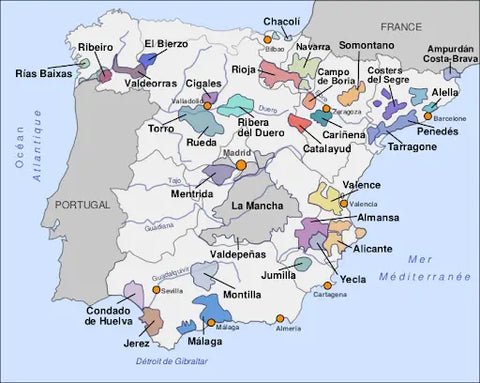
The wines of the Ribera del Duero appellation
Let's say it right away, Ribera del Duero is primarily an appellation of red wines. Indeed, while whites and rosés are also produced, they are in very small quantities, and it is the reds that truly establish the region's global reputation. These wines indeed exhibit remarkable power and elegance.
The red wines of Ribera del Duero are mainly made from the grape variety Tempranillo, locally known as Tinto fino and Tinta del país. This variety indeed represents 75% of the vineyard and defines the typicity of the blends.
With a thick skin and exhibiting amedium acidity in tasting, Tempranillo allows the production of powerful wines, colorful and tannic. Its most common markers are the aromas of ripe red and black fruits as well as spicy notes.
Other red grape varieties are also planted in Ribera del Duero, such as Cabernet Sauvignon, Merlot, Malbec and Grenache.Nevertheless, Tempranillo must make up at least 75% of the red wines of the DO, and the other varieties are therefore very minor.
Regarding the rosés from the region, they must be produced from the 5 red grape varieties previously mentioned. These are fresh and indulgent wines generally presenting pleasant fruity notes focused on strawberry and raspberry.
Finally, on the white wineside, the variety to remember is Albillo Mayor. This one allows the production of rather aromatic wines expressing notes of peach, citrus, apple, and apricot with medium acidity.
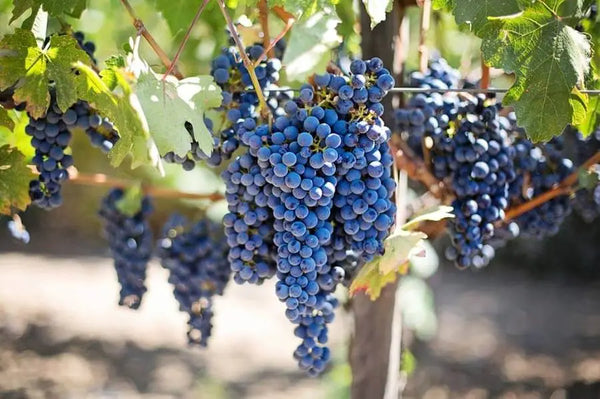
The aging of wines in the Ribera del Duero
But let's return to the red wines of the Ribera del Duero! Powerful and with great aging potential, these wines are regularly aged in oak barrels, thus allowing to temper their tannic strength but also to add an additional layer of aromatic complexity.
The duration of these aging processes is actually subject to control by the Spanish authorities and allows the use of the following labels: Joven, Crianza, Reserva, and Gran Reserva. Here is a quick description of what to expect in tasting for each of these indications.
- Wines with the mention « Joven » are wines that are little or not aged in barrels and primarily highlight fruity notes . No minimum aging period in barrel or bottle is required here.
- Wines bearing the mention « Crianza » must be aged for at least two years, including a minimum of one year in oak barrels. "Crianza" wines generally present fruity aromas but also woody notes (oak, vanilla, clove, licorice, etc.).
- Wines with the designation « Reserva » must undergo a minimum total aging in barrel and bottle of three years . Of these three years, at least one year must be spent in barrels, complemented by 6 months in the bottle. Bottles in this category are age-worthy wines complex, presenting a great aromatic richness (fruity, woody notes but also tertiary like leather, tobacco, or truffle).
- Finally, the red wines « Gran Reserva » represent the viticultural elite of the region and are only produced during the best vintages.These exceptional bottles must undergo a total aging of at least 5 years , including 2 years in barrels and 2 years in bottles. The "Gran Reserva" are great wines for aging, offering an incredible aromatic richness.
Summary table of aging mentions in Spain
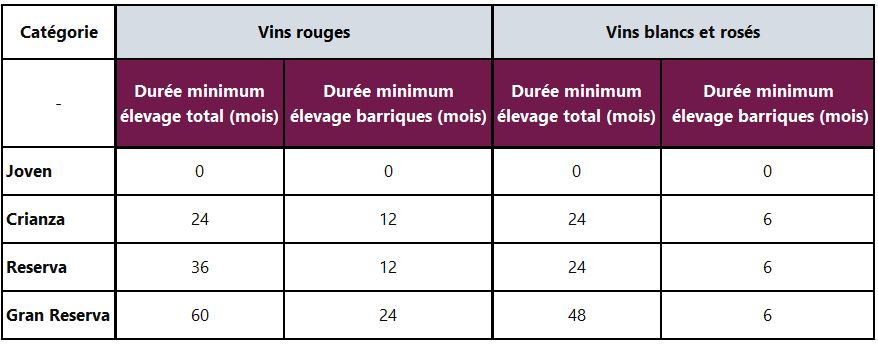
Climate and terroirs of the Ribera del Duero
The climate within the Ribera del Duero is characterized by astrong continentalityas well assignificant thermal amplitudes. Winters are therefore very cold (down to -20°C) while summers are particularly hot and dry (40°C and above). The annual rainfall is also very low (less than 400mm per year).
Another important point, the vineyards of the region are located at high altitudes: between 720m and sometimes more than 1000mabove sea level. The Ribera del Duero is indeed one of the highest vineyards in the northern hemisphere!
From a terroir perspective, the soils are mainly clay-limestone , offering ideal conditions for vine cultivation.
All these combined factors allow a slow and steady maturation of the grapes , thus preserving their freshness and acidity.
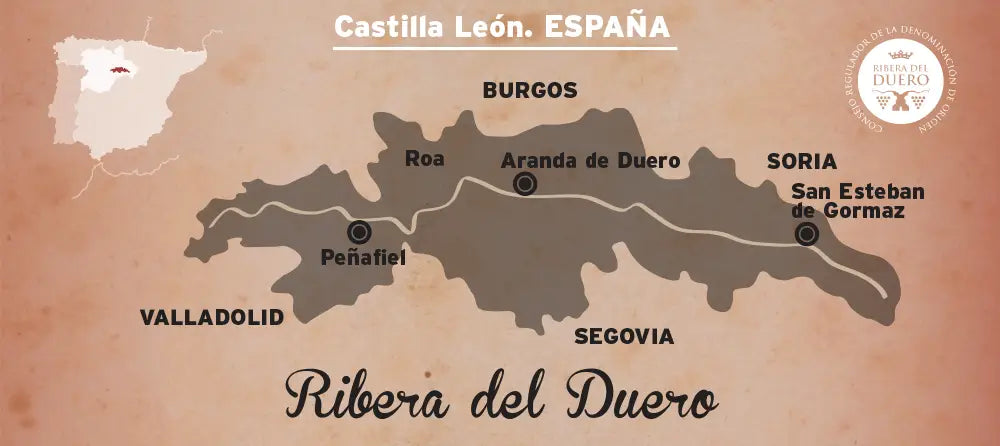
What to eat with Ribera del Duero wines ?
The red wines of Ribera del Duero being powerful, tannic, and rich in flavors, they generally pair well withred meat.
The cuvées from the region indeed pair particularly well with grilled or roasted meats, such as lamb, beef, and game . Traditional Spanish dishes such as cochinillo(roast suckling pig) and cordero asado (roast lamb) are excellent pairings, for example.
On the cheese side, aged manchegos and cheddars or aged pecorino can pair well with the red wines of Ribera del Duero due to their intensity and character.However, it is always wise to experiment and find what works best for your taste buds!
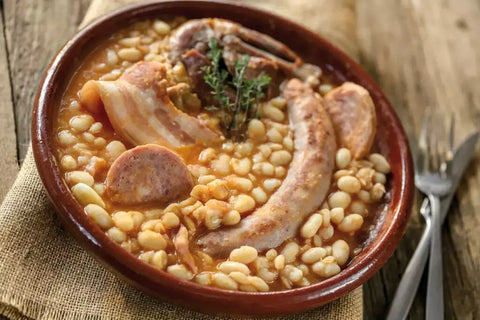
The best wines of Ribera del Duero
In conclusion, the Ribera del Duero appellation, with its deep and expressive red wines, is a flagship of Spanish viticulture.
Among the most renowned estates in the region, we particularly recommendBodegas Protos which stand out for their history as well as the quality of their wines. Their cuvées are indeed an excellent way to discover the regional wine pleasures.
Health, and above all, do not hesitate to reach out to







